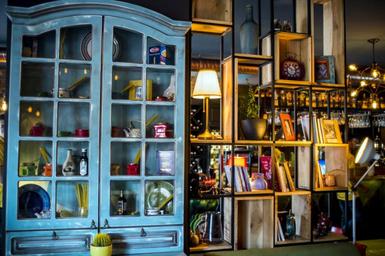Introduction
When it comes to interior decor, wall art isn't just an accessory; it's the heartbeat of a room, infusing life and character into your personal spaces. The right pieces can transform environments, create focal points, and evoke emotions that resonate with anyone who enters your home. However, with so many options available today—from aesthetic photos wall arrangements to large canvas art—knowing how to arrange these elements harmoniously can be quite challenging. This comprehensive guide will explore effective wall art placement techniques and offer valuable tips for creating harmony in your interior decor.

Wall Art Placement Made Easy: Creating Harmony in Your Interior Decor
Art is subjective and varies significantly from person to person. Different styles, colors, and mediums can evoke various feelings, thus making the selection of wall art a deeply personal experience. When considering wall art placement made easy, one must think about not only the aesthetics but also how each piece interacts with its surroundings.
Understanding Your Space
Assessing Room Dimensions
Before you even think about hanging a single piece of art, take a good look at your room’s dimensions. Is it spacious or snug? Tall or short? Understanding these elements helps you determine the size and number of art pieces you can incorporate.
Considering Natural Light
Natural light can dramatically affect how colors appear on your walls. A piece that looks stunning in the store might wash out under direct sunlight or become too dark in dim lighting. Test how different times of day influence the ambiance before making any final decisions.
Choosing the Right Art Style
Personal Spaces with Art: Reflecting Your Personality
Your choice of artwork should reflect who you are as an individual. Are you drawn to abstract paintings or vintage posters? Do you prefer nature scenes or urban landscapes? Whatever your preference may be, ensure that it resonates with your personality to create a warm atmosphere.
Aesthetic Photos Wall: Finding Balance
When selecting aesthetic photos for your wall, consider the color palette and themes that resonate throughout the room. A serene landscape photograph might complement a minimalist aesthetic better than a busy cityscape would.
Large Canvas Hanging Tips
Selecting the Right Size
One common mistake is choosing artwork that is either too small or too large for the space it occupies. Large canvases can serve as stunning focal points but must be proportionate to their surroundings. Aim for two-thirds to three-fourths of the available wall space if hanging above furniture.
Hanging Height Matters
The optimal height for hanging art is generally 57-60 inches from the floor to the center of the artwork. However, this can vary depending on ceiling height and furniture arrangement.
Creating Focal Points with Art
Choosing a Statement Piece
Every room needs a standout feature that grabs attention instantly. A bold painting or an oversized print can serve as this statement piece, drawing eyes immediately upon entering.
Complementary Art Arrangements
Once you've established a focal point, consider adding smaller pieces around it to create balance. These complementary artworks should echo colors or themes present in your statement piece without competing for attention.
Using Color Theory in Wall Art Placement
Warm vs Cool Colors: Setting The Mood
Colors have psychological effects; warm tones like red and yellow evoke energy while cool tones like blue and green promote calmness. Choose artworks that align with the mood you're looking to set in each room.
Monochromatic Vs Colorful Themes
Deciding whether to go monochromatic or colorful will also dictate how you place art on your walls. A monochromatic theme promotes cohesion while colorful arrangements might add diversity but require careful planning to avoid chaos.
Group Arrangements: Gallery Walls Made Simple
Planning Your Gallery Wall Layout
Gallery walls can be http://reflectivejourney550.image-perth.org/portrait-photo-ideas-to-transform-your-living-space daunting but are an excellent way to showcase numerous pieces cohesively. Use paper cutouts shaped like your artwork to plan layouts on the floor first before committing by hammering nails into walls.
Spacing Between Pieces: Finding That Sweet Spot
Maintaining consistent spacing is crucial when arranging multiple pieces together; usually, 2-4 inches between frames works well for most arrangements.
Incorporating Textures into Wall Art Choices
Mixed Media Artwork
Textures add depth and interest; consider incorporating textiles like fabric hangings alongside traditional framed art for variety within your arrangements.
Framing Styles Matter
Don’t underestimate how framing impacts overall design! Experiment with different materials—wooden frames provide warmth while metal frames add modernity—to see what suits other elements of decor best!
The Role of Lighting in Highlighting Artwork
Spotlight Techniques
Utilizing spotlights effectively draws attention towards particular artworks without overwhelming them by surrounding space!

Natural vs Artificial Lighting Solutions
Optimize positioning according to where natural light falls during daylight hours! If artificial options are necessary after sunset - adjustable sconces work brilliantly!
Art Placement According To Functionality
Art In Workspaces For Motivation
In offices or study areas placing motivating quotes/artworks inspires productivity & creativity!
Relaxation Spaces Need Calming Imagery
In bedrooms/bathrooms calming images promote serenity & relaxation; think soft hues/abstract shapes!
FAQs About Wall Art Placement
What height should I hang my artwork?
Ideally between 57-60 inches from floor level ensures proper viewing angles across various heights.
How do I choose art that matches my existing decor?
Focus on existing color schemes/styles—consider selecting pieces that feature similar hues/textures!
Is it okay to mix different frame styles?
Absolutely! Mixing adds visual interest; just ensure they share some commonality (color/material).
Can I use wallpaper behind my gallery wall?
Yes! Wallpaper creates additional texture/interest; choose patterns complementing rather than overpowering chosen artworks!
How do I decide which rooms need more artwork?

6. What kind of lighting is best for highlighting wall art?
Adjustable spotlights work wonders showcasing individual pieces without overwhelming surrounding space!
Conclusion
Creating harmony through wall art placements doesn't have to be overwhelming—instead it should inspire creativity! By understanding key concepts like assessing room dimensions & functionality along with choosing suitable styles/colors impacts overall aesthetic immensely! Whether you're going for an aesthetic photos wall effect or large canvas masterpieces—there's something out there waiting just perfect for every unique environment! Embrace experimentation while always keeping true essence intact—your home deserves nothing less than thoughtful decoration enriched by meaningful artistry!
With this guide on "Wall Art Placement Made Easy: Creating Harmony in Your Interior Decor," you're now equipped with expert insights that'll help elevate interiors immensely—all while staying true individuality throughout process! Happy decorating!